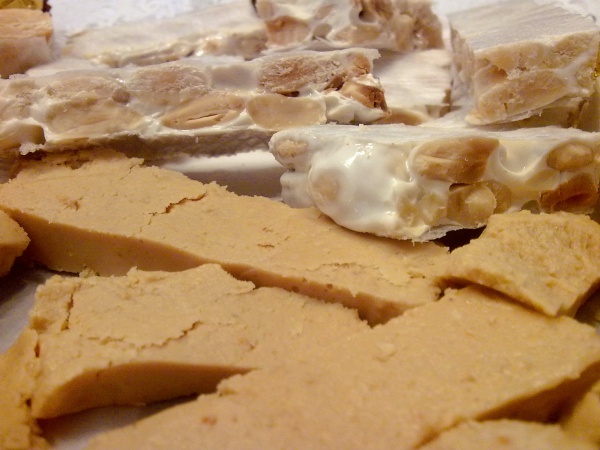Facts About Nougat
Nougat is a delectable confection made from sugar or honey, roasted nuts, whipped egg whites, and occasionally candied fruit. Known for its chewy texture, nougat frequently appears in candy bars and chocolates. The name "nougat" derives from the Occitan term "pan nogat" which likely originates from the Latin "panis nucatus" meaning 'nut bread.'
There are three primary types of nougat: white, brown, and Viennese (or German). White nougat, made with egg whites and honey, is soft and fluffy. Brown nougat, on the other hand, is firmer and typically crunchy. Viennese nougat is a smooth chocolate and hazelnut praline.
Nougat has a rich history, steeped in legends about its origins. Early recipes from Central Asia and the Middle East date back to the 10th century. In Southern Europe, nougat is a beloved part of Christmas celebrations.
Different regions have distinct names for nougat. In Spain, it’s called turrón; in Italy, it’s known as torrone; and in Greece, it's referred to as mandolato. In the United States and the United Kingdom, nougat found in candy bars often includes sucrose, corn syrup, and various aerating agents. However, traditional British nougat is crafted in the style of Southern European varieties.
There are several variations of nougat. Spanish turrón features toasted nuts. Italian torrone is often flavored with vanilla or citrus. Viennese nougat combines sugar, cocoa butter, and hazelnuts. In Germany, a similar treat made with sugar, cocoa butter, and hazelnuts is known as gianduja and is often referred to as nougat.

 Bulgaria
Bulgaria